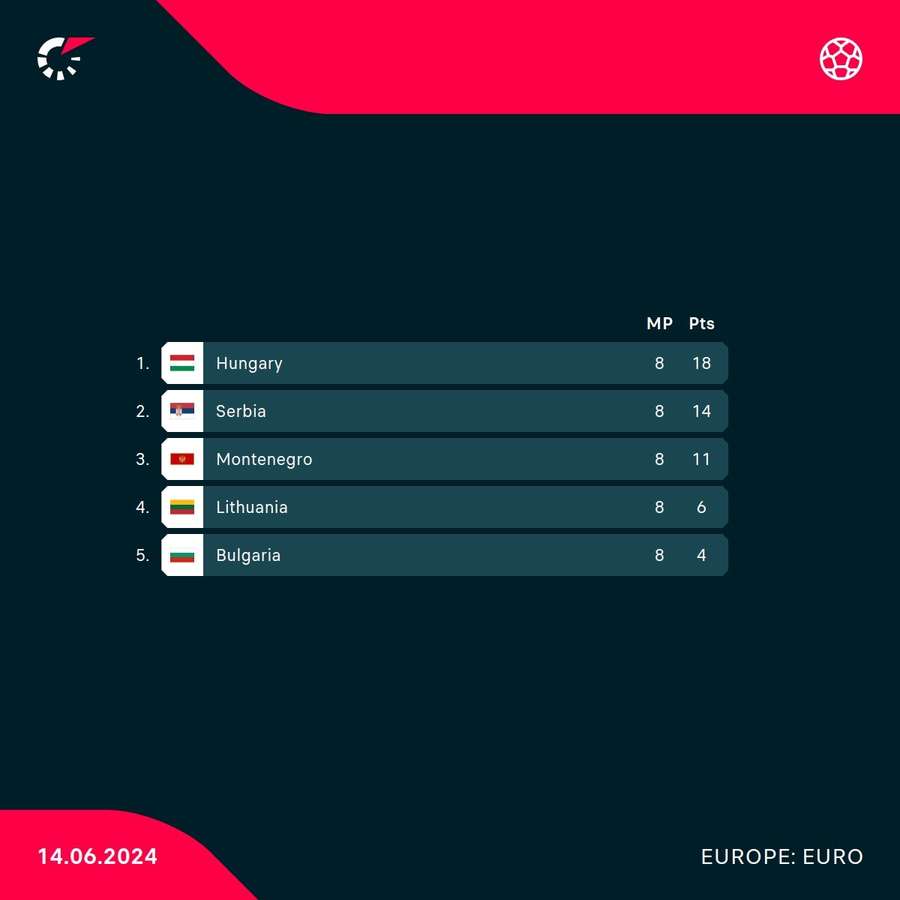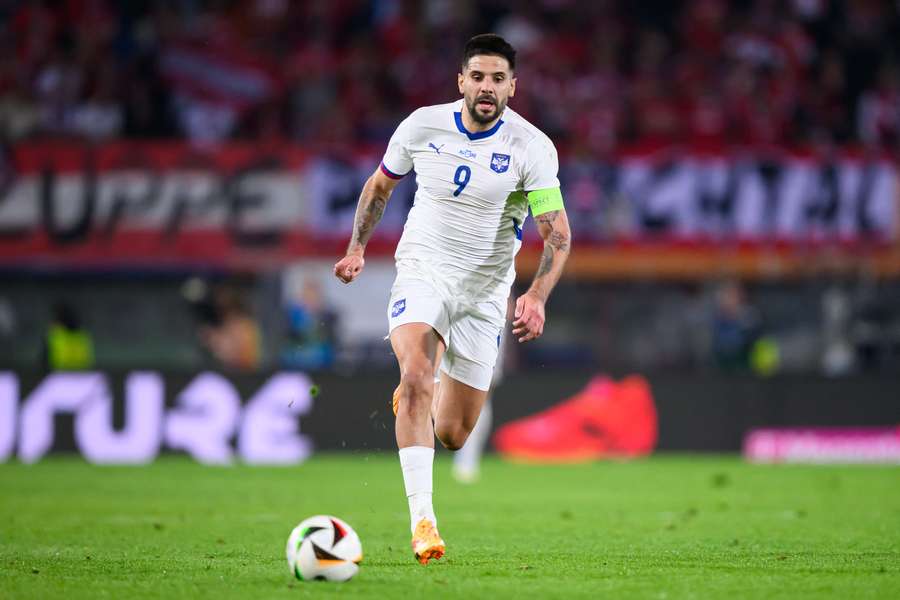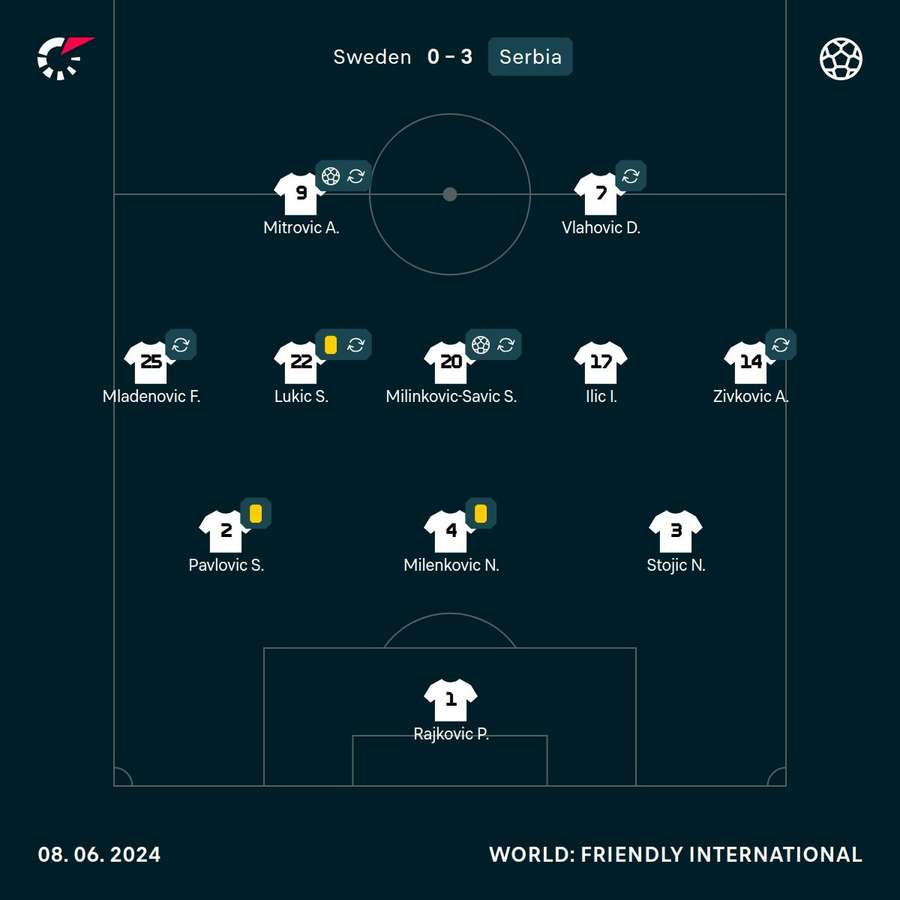EURO 2024 Preview: Serbia look to get rid of underachieving tag as attacking talent looms

Three times in their independent history, the Serbs have been to the World Cup, but in South Africa, Russia and Qatar they have always left after the group stage. Meanwhile, an appearance at the European Championships remained denied to independent Serbia for a long time, that is, until now.
Several familiar names and faces can be found in coach Dragan Stojkovic's squad, with the vast majority of players either playing in the top five leagues or wearing the jerseys of leading clubs in smaller competitions. Despite that, the Serbian's predicted performances are almost unreadable. Not only because they have historically struggled in tournaments in the last decades, they didn't convince much with their performances in the qualification stage for this competition either, finishing second behind Hungary to make their way to Germany.
The road to the championship
When another tournament setback came at the World Cup in Qatar, there was a lot of talk about whether coach Stojkovic should continue with the Serbian national team. However, the football federation decided to keep the current coach and so far has not made a bad choice in this regard.
It should be noted that the Eagles did not have a downright difficult qualifying group on paper. Bulgaria have been on the decline for a long time, Lithuania are a perennial underdog, so it was left to 'just' be better than Hungary or their neighbour from Montenegro.
The goal was met, but the Hungarians topped the group by four points. Not surprisingly, Serbia had lost both matches with them. In the end, the key factor for Serbia was that they managed to secure points in both games against Montenegro. Lithuania wasn't a problem either, only the Bulgarians were paradoxically a tougher obstacle for Stojkovic's team than anyone could have imagined.
Even before the last round, the Serbs were not secure in second place. They had the situation firmly in their own hands and it was enough for them not to lose to Bulgaria in Leskovac in front of their own fans. After the first half, they were heading for an expected win, but that seemed to change in the second half.
Suddenly, their opponents were on their way to three points. Fortunately, the first and only goal of Srdjan Babic, who has other duties than scoring goals as a defender, secured the necessary draw. But even if Serbia had fallen in the end, they would have retained second place anyway. Montenegro needed a win in Budapest in the afternoon match and could not pull that off.

Team leader: Dusan Tadic
If there's anyone the Serbia squad should look up to, it's definitely the captain himself, Dusan Tadic. An attacking elegance with a wealth of experience, known mainly for his creativity and ability to create scoring opportunities, he has already become one of the national team's legends.
He is, in fact, similar to Luka Modric for the Croats. He may be the one with the greatest motivation to excel at this tournament. He's had enough of the big events, but this might be his last tournament ever. And you can bet that if he catches his best form, he will be an extremely influential player even at 35 years old.
Let's just recall the numbers he put up at Fenerbahce last season. He played a total of 38 games in the Turkish top flight, only one of which he didn't start, scoring 10 goals and registering 14 assists.
In the Conference League, including the preliminary rounds, he played 16 games, was left out of the starting XI 13 times, but still scored six times.
Tadic immediately became an integral part of the core plans for the Istanbul side, coming to terms with the move to a new club after a painful farewell at Ajax. Injuries have eluded Tadic for a long time and when he has suffered one in the past, he has bounced back in a matter of days, a few weeks at most. He's been healthy for a long time, fully prepared to taste success.
Tadic contributed to six of his team's goals in the EURO 2024 qualifiers, while the Serbs have totalled 15 in eight matches. He scored twice, using only two direct shots on target to do so, showing an efficiency that has become a trademark of his game.
But above all, his work is appreciated by Aleksandar Mitrovic, the solid attacking pillar of Serbia. After all, Tadic's two assists helped him to two qualifying goals out of five. As an aside, against Montenegro, for example, the two switched roles, with Mitrovic assisting Tadic. This collaboration simply works very well and will be feared by their Group C opponents.

Even though the Serbian team did not present themselves in the best light on the pitch in Qatar, Tadic was one of the expected leaders. He didn't disappoint at all, after all, scoring two goals. Now, in any case, he finds great contrasts between the two championships.
"There was much more euphoria then. I remember when we were walking down the street, everyone was telling us that the semi-final would be the minimum," he said.
Currently, he and his teammates are in a slightly different position and maybe some less pressure will contribute to a good performance.
"We're just the kind of team that very quickly succumbs to those flashes of luck. It's good now that there's not so much of that. I can promise we'll do everything we can to grab that positive result."
On the threshold of glory: Strahinja Pavlovic
Strahinja Pavlovic is the third-youngest player in Serbia's squad for EURO 2024. But compared to Lazar Samardzic and Petaro Ratkov, teammates from Salzburg who were born earlier, he should be an integral part of the starting lineup for Stojkovic's squad.
He will form one of the three links of the defence and he is the prototype of a stopper who will mainly break up play and collect crosses that could cause danger. It is at these European Championships that he can clearly show that he was wrongly overlooked at Monaco a few years ago.
The Partizan Belgrade alumnus was going through a development curve that did not have major fluctuations. It was going up steadily, or at least staying steady. In January 2020, he headed to the south of France, but they seemed to have forgotten why they acquired the Sabac native for 10 million euros in the first place.
So, Pavlovic went to collect experience in the Belgian top flight for six months with sister club Cercle Brugge, and then he had a similarly long loan spell in Basel. However, he didn't get a proper chance in the princely club, playing only 12 matches there, eight of them in Ligue 1.
When an offer from Austria arrived in the summer of 2022, Pavlovic didn't hesitate to say yes. He needed to play at his young age, not worry about whether he would even be part of the matchday squad or wait for a few of his defensive colleagues to get injured.
The move to RB Salzburg was a coup. His physical strength, tactical intelligence and ability to read the game quickly made him a key part of their defence. For example, in the last edition of the Austrian Bundesliga, he won 72% of aerial duels. That was the highest percentage ever of any player in the competition who had at least 50 aerial duels during the season.
In qualifying for the current European Championships, he played six matches, always in full. If he confirms the form he boasted during the 2023/24 season and proves his qualities, he can make a loud claim for a more lucrative move in the near future.
For now, there is relative silence around the 23-year-old, who has been used to playing with peers two to three years older than him since he was young. The fact that his performance is steadily increasing is proven by transfermarkt. They state that his market value tripled between 2022 and 2023 to the current €25 million.
Who knows if a prediction from the past will come true for Kalaba, as the player is nicknamed. When he recalled his first beginnings in the Partizan A-team in 2020 in an interview with Serbian website Telegraf.rs, he recalled a prophetic story.
"It was April 2018, I was resting in Sabac after my match for the youth team. And suddenly my coach called me that I would play for Partizan in a friendly. That they were missing a stopper, so he recommended me," he described.
"It was just a few months after I was first invited to train with the guys. I was nervous in the dressing room when I saw all the players around, but on the pitch, I didn't feel that pressure anymore. Then my teammate Djordje Ivanovic came up to me and said: 'Kalaba, you're going to play for Manchester United one day. Listen to what I'm telling you'."
Formations & tactics

Serbia have a clear set order under Stojkovic that changes very little. In eight qualifying matches, Dusan Tadic has featured up front six times, along with Sergej Milinkovic-Savic supporting Aleksandar Mitrovic up top. This triangle was then transformed twice when the pure playmaker Dusan Vlahovic operated next to Mitrovic.
What the train doesn't run over, then, is a game with three defenders and four midfielders. The 3-4-2-1, or 3-4-1-2, formation was switched to 4-3-3 only once when the Serbs tried to find a way to score an equaliser in the second half in Hungary. In vain, there was no goal and this experiment just didn't work.
Stojkovic didn't surprise at all in goal. Vanja Milinkovic-Savic, who has played all eight competitive matches in the fight to qualify for EURO 2024, will be the indispensable number one. If anyone could have taken a better assessment from the Qatar championship, it was the 27-year-old man in gloves, currently defending the colours of Torino. He can pull off an artful tackle at the right time, makes very few mistakes and is also confident with his feet.
The number two should be the established Djordje Petrovic, who is increasingly settling in at club level at Chelsea. The role of the third keeper will be filled by Predrag Rajkovic, the most experienced of the trio, who has also played the most national team games of the three selected so far. In terms of the hierarchy, he has dropped two levels, but he knows very well what big tournaments are all about. He participated in both the 2018 and 2022 World Cups.
That Serbia will find it hard to give up playing with three defenders is proven by the final squad list, in which Stojkovic tried to find as many quality centre-backs as possible. And in this respect, he relied primarily on experience.
Nikola Milenkovic, Milos Veljkovic and Pavlovic should start. Smartly, the three central defenders will provide security for the aforementioned trio if anything happens. Srdjan Babic, as a left-handed player, will be at least a decent alternative for Pavlovic. However, Uros Spajic and Nemanja Stojic, who perhaps a bit surprisingly got the call at the expense of Strahinja Erakovic do not have that kind of experience.
Of course, defender Nemanja Gudelj will also be an alternative for the defence, but he is more likely to be counted on to fill in as a midfielder with more defensive duties. Sasa Lukic should operate alongside him. In general, however, there are no fixed places in this regard.
In any case, Stojkovic has relied on this midfield pairing in the last four qualifying matches, pushing Gudelj more forward out of defence and over time, this option seems to have sat best. Marko Grujic was perhaps a little surprisingly absent from the final roster, but both Ivan Ilic and Nemanja Maksimovic have experience of being included in the starting eleven and could also handle the necessary midfield duties well. Srdjan Mijailovic and Lazar Samardzic will probably wait for their chance after that.
Filip Kostic and Andrija Zivkovic should primarily operate on the edges of the midfield. Piksi has a few more options on the left, but it's worse on the right. The former will be mainly guarded by Filip Mladenovic, should the game need to be directed more defensively. Mijat Gacinovic can also play there.
It can be said that Veljko Birmancevic, a representative from the Czech top league, could also play on the left side, but he would like to be positioned a bit higher and lead the line as he has done for Sparta Prague. On the right flank, however, it's a bit of a struggle. Nemanja Radonjic, who reportedly didn't like the fact that his position in the national team was weaker than before and decided to take a sabbatical, was not called up, whilst Filip Djuricic retired. Thus, if there could be a major weakness somewhere in the Serbian selection, it would be if Zivkovic gets injured.
The offensive trident of Tadic, Milinkovic-Savic and Mitrovic will be Stojkovic's number-one choice. In short, it is logical that the two current players of Saudi Al Hilal, who summarily had a very decent season, supported by the proven Serbian record holder in the number of starts for the national team, will get along better on the pitch.
Should two pure strikers be needed, Vlahovic will come in, with Luka Jovic and the almost unpopular Petar Ratkov filling the role of substitutes. The already mentioned Gacinovic and Birmancevic are of course also counted on for the attacking line, perhaps in some extreme and experimental formations.
